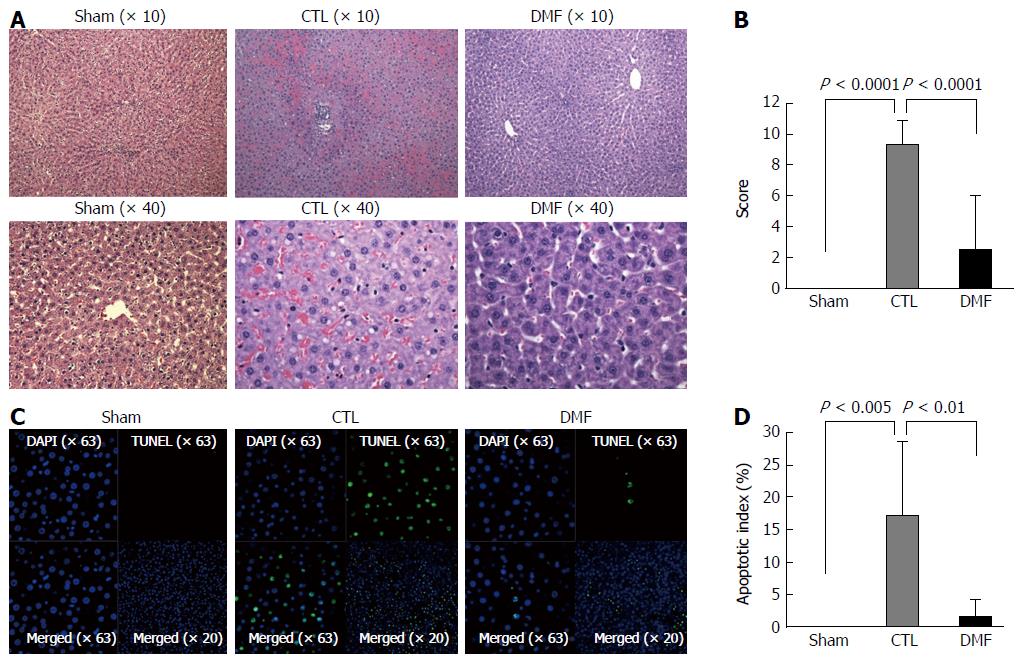Copyright
©The Author(s) 2017.
World J Gastroenterol. Jul 7, 2017; 23(25): 4508-4516
Published online Jul 7, 2017. doi: 10.3748/wjg.v23.i25.4508
Published online Jul 7, 2017. doi: 10.3748/wjg.v23.i25.4508
Figure 1 Liver ischemia/reperfusion injury in a rat model.
A: Hematoxylin and eosin (H&E)-stained histology of rat liver subjected to 60 min of ischemia and 2 h of reperfusion. The levels of substantial intracellular vacuolization, sinusoidal dilatation, congestion, and focal necrosis of the liver parenchyma in the dimethyl fumarate (DMF) group were significantly improved compared to those of the CTL group; B: Liver histology damage scoring (Suzuki score). Data represent the mean ± SD. Pretreatment with DMF ameliorated ischemia/reperfusion injury (I/RI)-induced histological changes; C: TUNEL staining of rat liver subjected to 60 min of ischemia and 2 h of reperfusion. The DMF-treated group had significantly fewer TUNEL-positive cells (green fluorescence) than the CTL group; D: Apoptotic index indicating that pretreatment with DMF improved I/RI-induced apoptosis (P ≤ 0.01). Data represent the mean ± SD. DMF: Dimethyl fumarate; CTL: Control.
- Citation: Takasu C, Vaziri ND, Li S, Robles L, Vo K, Takasu M, Pham C, Farzaneh SH, Shimada M, Stamos MJ, Ichii H. Treatment with dimethyl fumarate ameliorates liver ischemia/reperfusion injury. World J Gastroenterol 2017; 23(25): 4508-4516
- URL: https://www.wjgnet.com/1007-9327/full/v23/i25/4508.htm
- DOI: https://dx.doi.org/10.3748/wjg.v23.i25.4508









